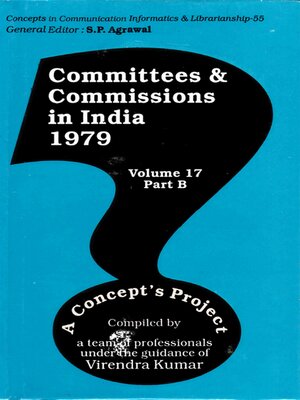Committees and Commissions in India 1979
ebook ∣ A Concept's Project (Concepts in Communication Informatics and Librarianship-55)
By Virendra Kumar

Sign up to save your library
With an OverDrive account, you can save your favorite libraries for at-a-glance information about availability. Find out more about OverDrive accounts.
Find this title in Libby, the library reading app by OverDrive.



Search for a digital library with this title
Title found at these libraries:
| Library Name | Distance |
|---|---|
| Loading... |
The author explains the notation I have adopted in the transcription of the Hindu terms. The circumflex accent, as in d, i, 4, indicates that the vowel is long; the vowels r and I are transcribed by ri and li. It will be observed that u and 4 should be pronounced like the French sound ou, and that ai and au are always diphthongs. An aspirated consonant is followed by h, and this aspiration ought to be distinctly expressed after the principal articulation, as in inhhorn. Of the gutterals, g and gh are always hard, and the nasal of this order is marked by n, to be pronounced as in song. The palates c and j (and consequently their corresponding aspirates) are pronounced as in challenge, journey, and the nasal of the same order, % like this letter in Spanish. The lingual consonants, which, to our ear, do not differ perceptibly from the dentals, are rendered by t, th, d, dh, n. The sibilants c and sh are both pronounced almost as sh in English. The anusvara (the neuter or final nasal) is marked by ni, and the visarga (the soft and final aspiration) by h. The orthography has been rendered throughout rigorous and scientifically exact; only in a small number of modern names have I kept to the orthography in general use.







